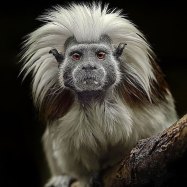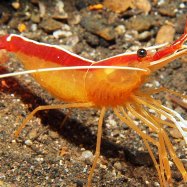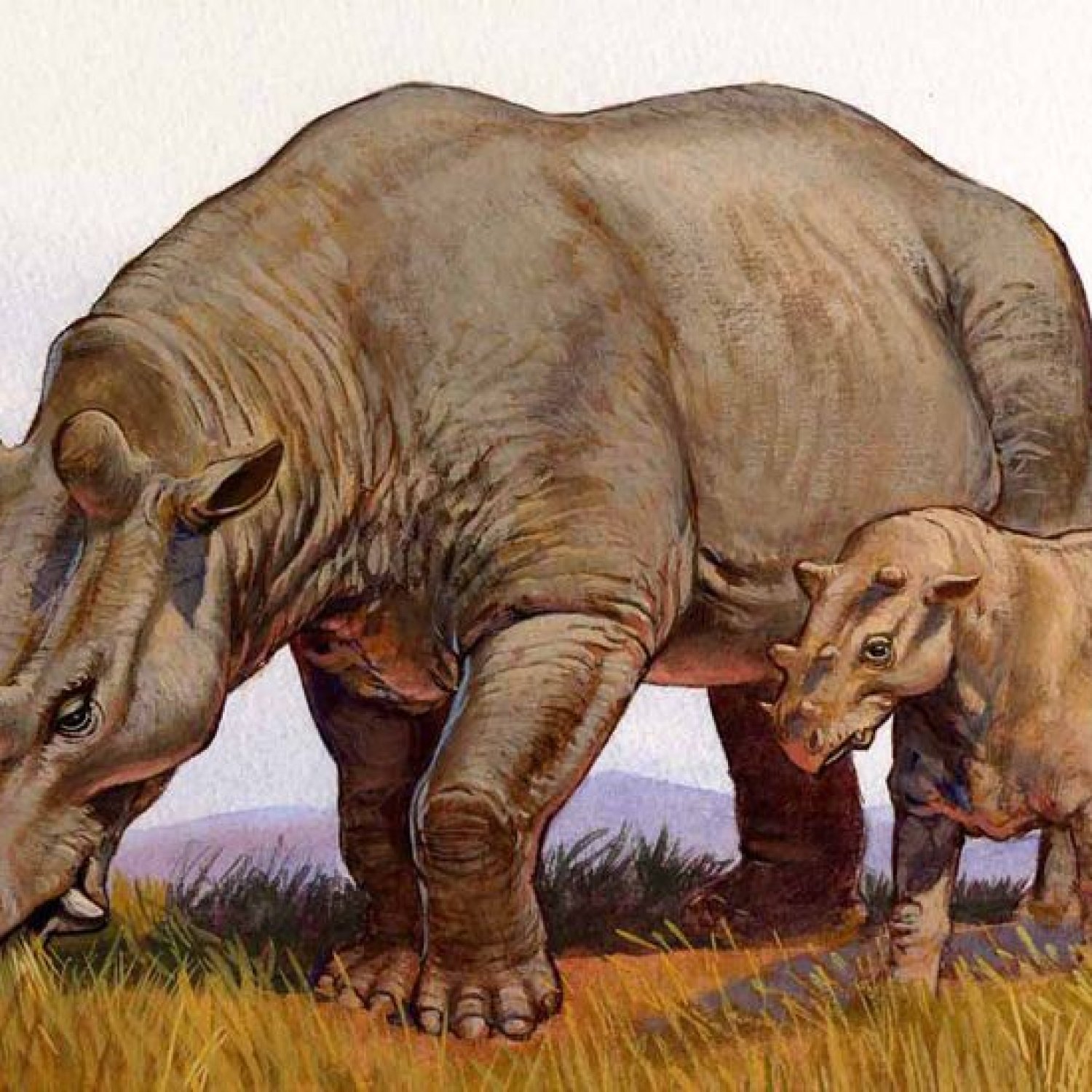
Uintatherium
Up to 4 meters (13 feet)
Uintatherium, a large and stocky mammal from the extinct family Uintatheriidae, once roamed the lands of Wyoming, Utah, and Colorado. Reaching up to 4 meters in length, this powerful creature left behind fascinating fossil evidence for us to discover and learn from. #Uintatherium #extinctanimals
Animal Details Summary:
Common Name: Uintatherium
Kingdom: Animalia
Habitat: Woodlands and grasslands
The Majestic Uintatherium: A Prehistoric Wonder
Millions of years ago, the earth was home to a multitude of fascinating creatures, including the Uintatherium. This majestic and mysterious animal roamed the woodlands and grasslands of North America during the Eocene epoch and has left a lasting impression on the world of paleontology and zoology. Through fossil evidence discovered in the United States, specifically in Wyoming, Utah, and Colorado, scientists have been able to study and learn about this intriguing creature. Join us as we delve deep into the world of Uintatherium and discover its incredible attributes Uintatherium.A Long-Lost Species
The Uintatherium, whose scientific name is also Uintatherium, was a member of the extinct order of mammals called Dinocerata. These fascinating creatures are believed to have evolved from primitive hoofed mammals and dominated the North American landscape for millions of years, before mysteriously disappearing from the earth. The Uintatherium, along with its fellow Dinocerata, lived during the Eocene epoch, which lasted from 56 to 33.9 million years ago.Geographical Distribution and Discovery
The Uintatherium was primarily found in North America, specifically in the United States. Fossil evidence of this fascinating creature has been discovered in Wyoming, Utah, and Colorado. As one of the most well-preserved and abundant fossilized mammals found in this region, the Uintatherium has provided scientists with valuable information about the past environment and the animals that lived during that time.The first discovery of a Uintatherium fossil was made in 1856 by American paleontologist Joseph Leidy in Wyoming. Since then, more fossil remains have been found, allowing scientists to piece together an image of this enigmatic animal Urechis Unicinctus.
Fascinating Features
The Uintatherium was a massive animal, with a body shape similar to that of a rhinoceros. It had a large and stocky build, with four stout legs to support its immense weight. On average, it could grow up to 4 meters (13 feet) in length, making it one of the largest land mammals of its time.One of the most striking features of the Uintatherium was its head. It had a massive skull, up to 90 centimeters (3 feet) long, with large bony protrusions or knobs on its forehead, giving it a unique appearance. These protrusions were believed to be used for defense against predators or for male-male competition during the breeding season.
Diet and Feeding Method
The Uintatherium was a herbivorous animal, meaning it primarily ate plant-based foods. Its diet likely consisted of leaves, fruits, and other vegetation found in its habitat of woodlands and grasslands. Given its size, it is estimated that it would have required a vast amount of food to sustain its massive body.Scientists believe that the Uintatherium had a specialized feeding method, similar to that of modern-day rhinoceroses. It likely used its prehensile lips to grasp and pull branches toward its mouth, allowing it to reach and consume vegetation that was otherwise out of its range.
A Mystery of Coloration
One of the most interesting aspects of the Uintatherium is its coloration. Unfortunately, due to the limitations of fossil evidence, scientists are unable to determine the exact color of this magnificent creature. However, based on the fossils of its closest living relative, the tapir, it is believed that the Uintatherium may have had a dark-colored coat, similar to that of a modern-day rhinoceros.The Uintatherium Family
The Uintatherium belonged to the family Uintatheriidae, which consisted of several other species, including the Uintatherium anceps, Uintatherium fricki, and Uintatherium insperatus. These species shared many of the same characteristics, such as the large skull and bony protrusions, making them easily identifiable as members of the same family.The Uintatherium and Evolution
The Uintatherium played a significant role in the study of evolution. Its distinctive characteristics, such as its large skull and bony knobs, provided scientists with valuable insights into the development of mammalian features. Through the study of its fossils, scientists have been able to better understand the evolutionary processes that took place millions of years ago.The Uintatherium: Extinction and Legacy
Sadly, like many other prehistoric creatures, the Uintatherium eventually became extinct. Although the causes of its extinction are still debated, scientists believe that a combination of factors, such as global climate change and competition with other herbivorous animals, led to its downfall.However, the Uintatherium's legacy lives on through its numerous fossil remains and the significant contributions it has made to our understanding of the past. Its impressive size and unique features continue to captivate the minds of scientists and animal lovers alike, making it an essential part of the natural history of North America.
Conclusion
The Uintatherium, with its massive size and intriguing features, was truly a wonder of its time. Despite its extinction, it has left a lasting impression on the world of paleontology and zoology, providing valuable insights into the past. Its legacy continues to inspire and fascinate us, making it one of the most iconic and mysterious animals to have roamed the earth. The Uintatherium will forever hold a special place in our understanding of the natural world and our ever-evolving planet.

Uintatherium
Animal Details Uintatherium - Scientific Name: Uintatherium
- Category: Animals U
- Scientific Name: Uintatherium
- Common Name: Uintatherium
- Kingdom: Animalia
- Phylum: Chordata
- Class: Mammalia
- Order: Dinocerata
- Family: Uintatheriidae
- Habitat: Woodlands and grasslands
- Feeding Method: Herbivorous
- Geographical Distribution: North America
- Country of Origin: United States
- Location: Fossil evidence found in Wyoming, Utah, and Colorado
- Animal Coloration: Unknown
- Body Shape: Large and stocky
- Length: Up to 4 meters (13 feet)
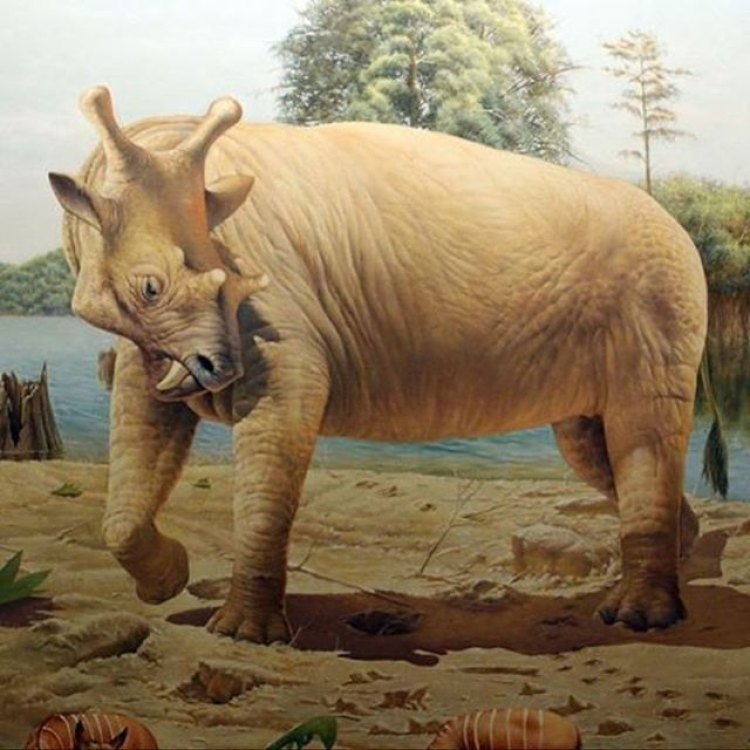
Uintatherium
- Adult Size: Unknown
- Average Lifespan: Unknown
- Reproduction: Unknown
- Reproductive Behavior: Unknown
- Sound or Call: Unknown
- Migration Pattern: Unknown
- Social Groups: Unknown
- Behavior: Unknown
- Threats: Extinct
- Conservation Status: Extinct
- Impact on Ecosystem: Unknown
- Human Use: None
- Distinctive Features: Large size and unique horn-like structures on the skull
- Interesting Facts: Uintatherium is an extinct mammal that lived during the Eocene epoch, approximately 46 to 34 million years ago. It was one of the largest land mammals of its time.
- Predator: Unknown
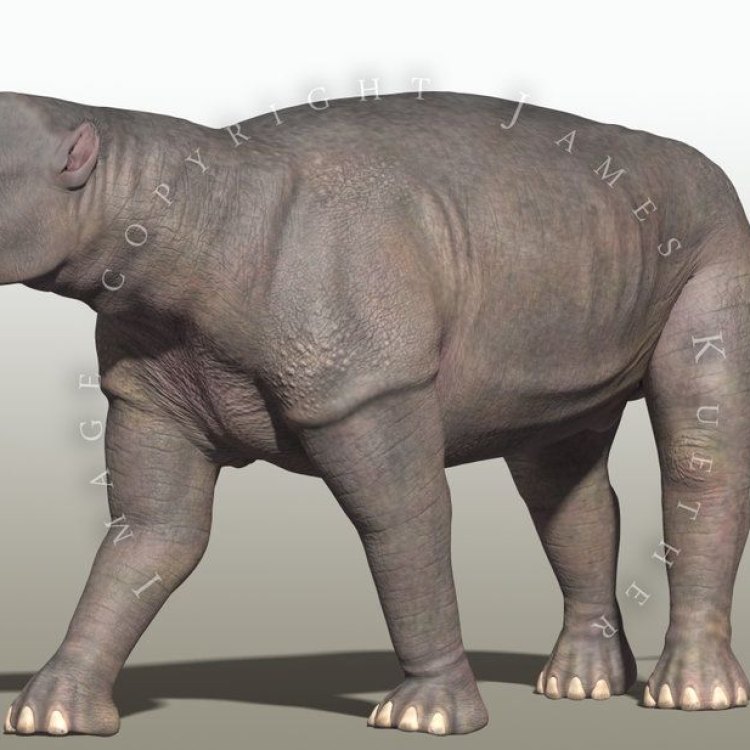
Uintatherium
The Fascinating Tale of Uintatherium: The Enigmatic Giant of the Eocene Epoch
Deep in the heart of the Eocene epoch, millions of years ago, roamed a creature that baffles and intrigues scientists to this day. This colossal mammal, known as Uintatherium, was a true giant in every sense of the word. Its size, its features, and its existence have captivated the minds of researchers and laymen alike. However, there are still many mysteries surrounding Uintatherium, leaving us to only imagine and speculate about its life and behavior PeaceOfAnimals.Com. In this article, we will delve into the world of Uintatherium and uncover its remarkable story.Scientists estimate that Uintatherium lived on Earth approximately 46 to 34 million years ago, during the Eocene epoch. It inhabited vast areas of North America, including what is now the western United States and western Canada. Its name comes from the Greek word for "Uinta," referring to the Uinta Mountains where its fossils were first discovered in the 19th century. Its name also includes the term "therium," which means "beast" in Greek, emphasizing its enormity and unique characteristics.
One of the most intriguing things about Uintatherium is its size. Unfortunately, there are no exact measurements or estimates of how large this mammal could be in its adult form. Due to the limited remains of Uintatherium, scientists can only speculate about its actual size. However, based on the size of its skull, which is the most complete fossil found to date, scientists believe that Uintatherium could grow up to 4 meters in length and weigh over 2 tons Uinta Ground Squirrel. This makes it one of the largest land mammals of its time, surpassing the size of modern-day elephants. Imagine coming face to face with such a colossal creature, it is a sight that many of us can only imagine.
One of the most distinctive features of Uintatherium is the unique horn-like structures on its skull. These structures were composed of bony protuberances, and it is estimated that there were four on the forehead and two on the nose of this prehistoric giant. These horns were not only for aesthetics but also served as a possible defense mechanism against predators.
Speaking of predators, Uintatherium's natural enemies are still unknown. Due to the limited fossil record, we can only speculate about what creatures could have posed a threat to this behemoth. Some scientists suggest that Uintatherium may have been preyed upon by large carnivorous mammals, such as creodonts and mesonychids, which were also prevalent during the Eocene epoch. However, until we discover more fossils or unearth new evidence, the predator of Uintatherium will remain a mystery.
But what about the other aspects of Uintatherium's life? As mentioned earlier, there is little to no information about its reproductive behavior, lifespan, or migration patterns. Scientists have not found any remains of juveniles or infants, making it challenging to determine how Uintatherium reproduced and cared for its young. Likewise, there is no evidence of any migration patterns or social groups formed by these creatures. Due to these unknowns, we can only imagine how Uintatherium lived and survived in its environment.
As for its behavior, researchers believe that Uintatherium was a primarily solitary animal, coming together only during the breeding season. Its herbivorous diet and large size suggest a slow-moving and docile creature, with no need for agility or speed to hunt prey. Its massive horn-like structures also indicate that it may have been more of a gentle giant, using them as a display rather than a weapon. Again, this is all just speculation, but it gives us a glimpse into the possible behavior of Uintatherium.
Unfortunately, despite its massive size and unique features, Uintatherium was not able to survive the test of time. It is classified as an extinct species, with its last known fossils discovered in the mid-19th century. The exact cause of its extinction is unknown, but it is believed to be due to changes in the environment and competition from other species. Whatever the reason may be, Uintatherium's demise is a testament to the constantly changing landscape of our planet.
Despite its extinction, Uintatherium has left a lasting impact on our ecosystem. Its massive size and herbivorous diet undoubtedly had an impact on the vegetation of its time. With its extinction, the ecosystem had to adapt and evolve to accommodate the changes, leading to the diversity we see today. Similarly, Uintatherium's fossils have played a crucial role in helping scientists understand and piece together the history of our planet.
Finally, it is worth mentioning that human use of Uintatherium is non-existent. This is not surprising, given that this colossal creature lived millions of years before human existence. However, its fossils have been a source of fascination and intrigue for centuries. Even today, scientists and researchers continue to study this extinct species, pushing the boundaries of our knowledge and understanding.
In conclusion, Uintatherium is an enigmatic giant that continues to pique our curiosity and inspire our imagination. Its story is one of mystery, with countless unknowns still surrounding its existence. However, even with limited information, we can marvel at the sheer size and unique features of this prehistoric creature. Uintatherium's presence on Earth may have been brief, but its impact on our understanding of our planet is undeniable. It is a reminder of the ever-changing nature of our world and the creatures that inhabit it.
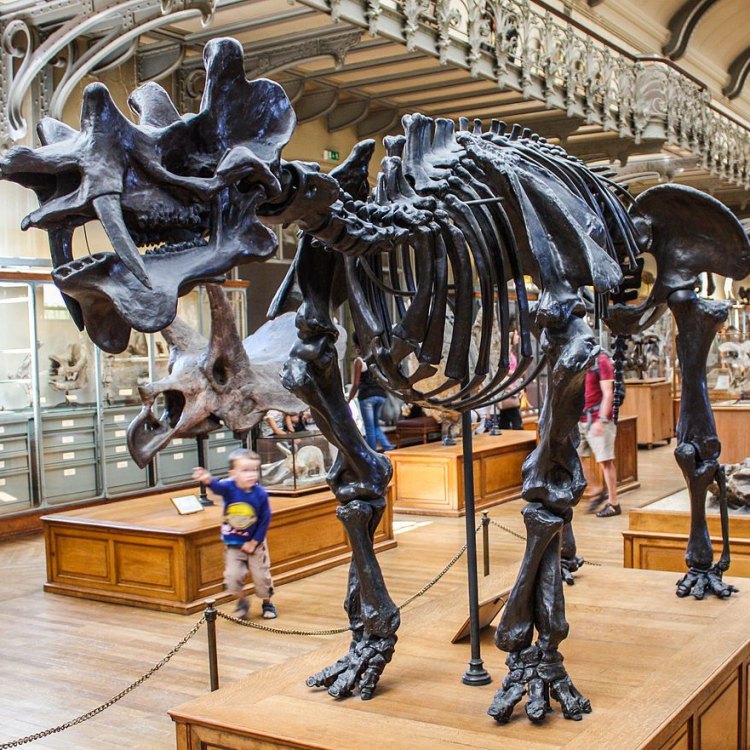
The Majestic Uintatherium: A Prehistoric Wonder
Disclaimer: The content provided is for informational purposes only. We cannot guarantee the accuracy of the information on this page 100%. All information provided here may change without prior notice.









